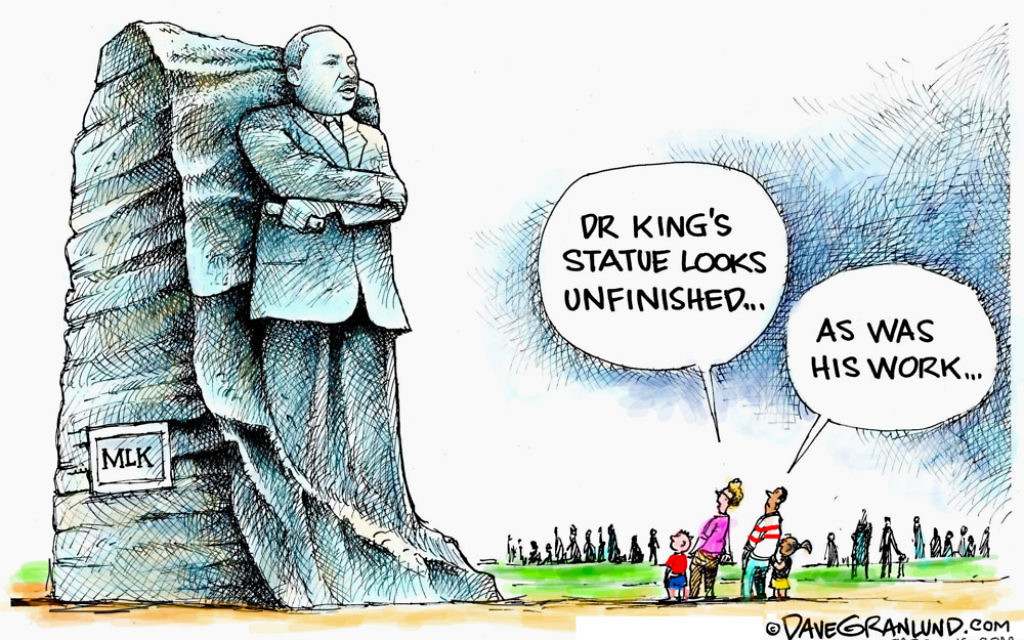Segregation Traces its Roots to Government Laws
Richard Rothstein examines how government policies led to unfair housing and segregation in the United States.
Segregation and government policies have a long history together in the United States. Although laws are supposed to prevent the separation of whites and people of color, federal, state and local policies have continued to put some people at a disadvantage, said Economic Policy Institute research associate Richard Rothstein, who addresses the topic in his latest book, “The Color of Law: A Forgotten History of How Our Government Segregated America.”
Rothstein, who spoke at the Jimmy Carter Presidential Library and Museum on Tuesday, Oct. 24, talked to the AJT about the ideology behind segregation, unfair housing and challenges posed through government policies.
He said government-imposed policies perpetuated racial segregation that went back to slavery through a caste system that was never removed.
Get The AJT Newsletter by email and never miss our top stories Free Sign Up
“If you look at the time period before Brown vs. Board of Education, the school system clearly violated the Constitution for 50 years before the law was passed,” Rothstein said. “The same applies with other forms of segregation in Atlanta and elsewhere with buses, restaurants, hotels or water fountains. These were all violations of the Constitution but were practiced nonetheless by the government.”
Housing laws are another example of how government-imposed policies have led to segregation, he said. For instance, there used to be countless integrated neighborhoods in Atlanta and other U.S. urban areas. “We would be surprised if went back in time and looked at the samples of integration, as most workers had jobs in the city and had to live close enough to walk to work.”
He mentioned the Flats, an integrated Atlanta neighborhood until the federal government demolished the housing to build a segregated community.
“The African-American families who were displaced as a result of the demolition had to find housing elsewhere, and although a separate project was built for them years later, the area was now segregated,” Rothstein said.
He said the Federal House Administration long enforced unfair policies to get builders to develop all-white suburbs.
Rothstein used Levittown, N.Y., as an example. After building 1,700 homes with no buyers, William Levitt approached the federal government to obtain loan guarantees. Once he got the guarantees, he was told that they were conditional on clauses being included in the deeds to prohibit the sale of the homes to African-Americans.
“This was open segregation and just as implicit and unconstitutional as the restaurants, fountains, or the buses and schools prior to 1954,” Rothstein said. The purpose was to segregate metropolitan areas using the FHA’s underwriting manual, which was distributed to appraisers across the country to determine whether developers were eligible for FHA guarantees.
“The manuals explicitly said developments could not be approved for guarantees if they possessed incompatible racial elements,” Rothstein said. “The policies passed down by the federal government were explicit and were not created for any other purpose than segregation.”
As a result, African-Americans moved into segregated urban neighborhoods with limited housing and fewer public services, Rothstein said.
“These areas have deterred whites from moving into them and left a stigma that African-Americans are slum dwellers, which has also reinforced their desires to not live among them — not understanding that the slum conditions were not characteristics of the people but a result of government policies,” he said. “Those homes that whites purchased with the help of government support in the early 1940 and ’50s, for example, for $100,000 gained a tremendous amount of equity over the next generation, gaining millions of dollars, … and are responsible for much of the inequality that exists in this country today.”
He said African-Americans average 60 percent of the income of whites and 7 percent of the accumulated wealth. “Wealth is the main contributor to economic security. That enormous difference between a 60 percent income ratio and 7 percent wealth is entirely attributable to unfair housing policies.”
Rothstein also attributes police shootings such as the killing of Michael Brown in Ferguson, Mo., in 2014 to governmental policies. “The kinds of police confrontations would not have existed if the concentration of African-Americans were in not tiny neighborhoods with no access to jobs and little hope for the future,” he said. “The police occupy the neighborhoods like a colonial force, and the young men act out in frustration, so you have a tinderbox in places like this, but only because they are segregated neighborhoods.”
According to Rothstein people can help implement change however by becoming aware of biased government policies.
He said change can begin with education about the problems and their history.
“The first thing individuals need to know is to learn about them,” Rothstein said. “The subtitle of the book is ‘a forgotten history of how our government segregated America.’ … We’ve all forgotten about it, and before we can remedy it, we have to understand that segregation did not happen by accident but as a result of very explicit government policies.”






comments